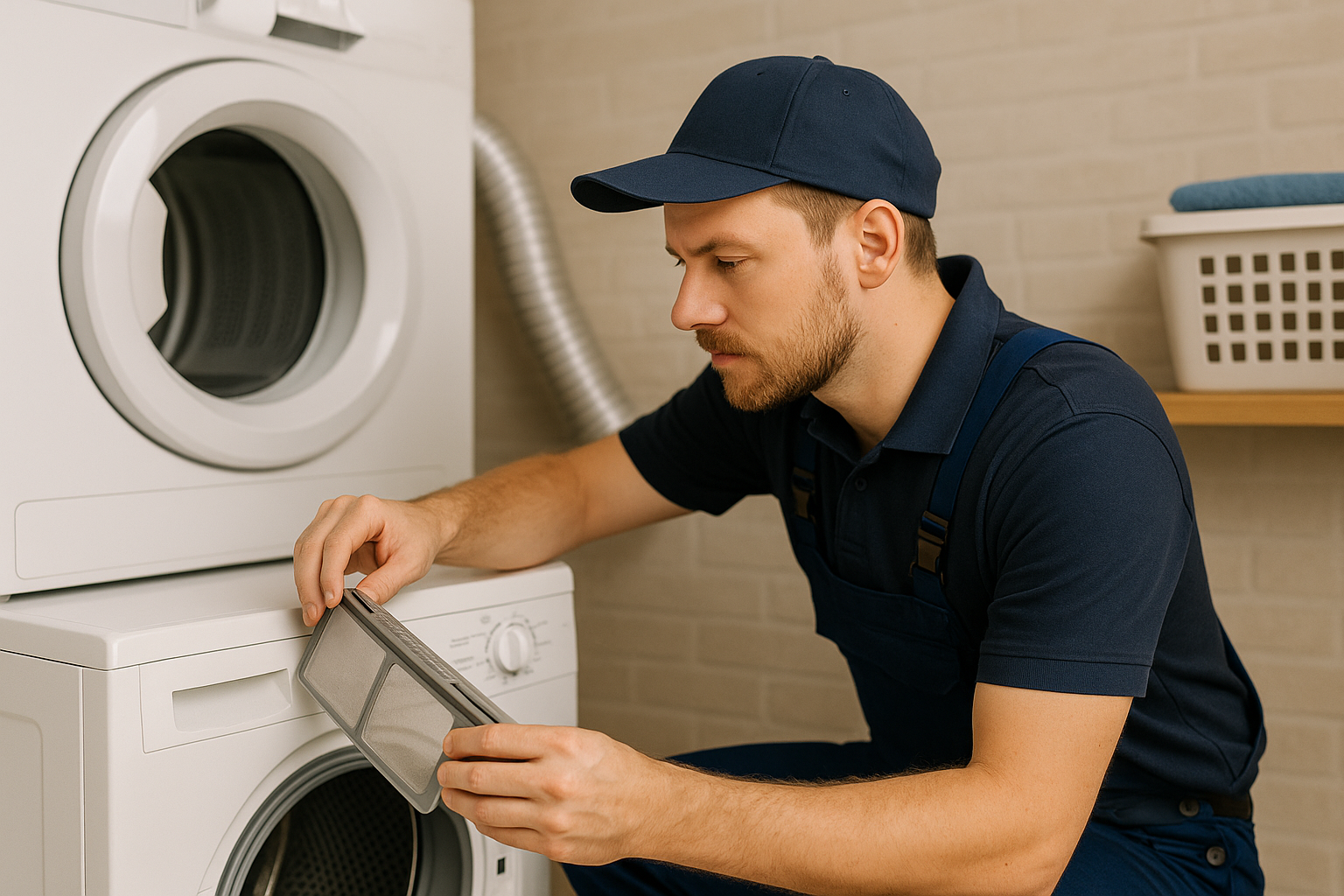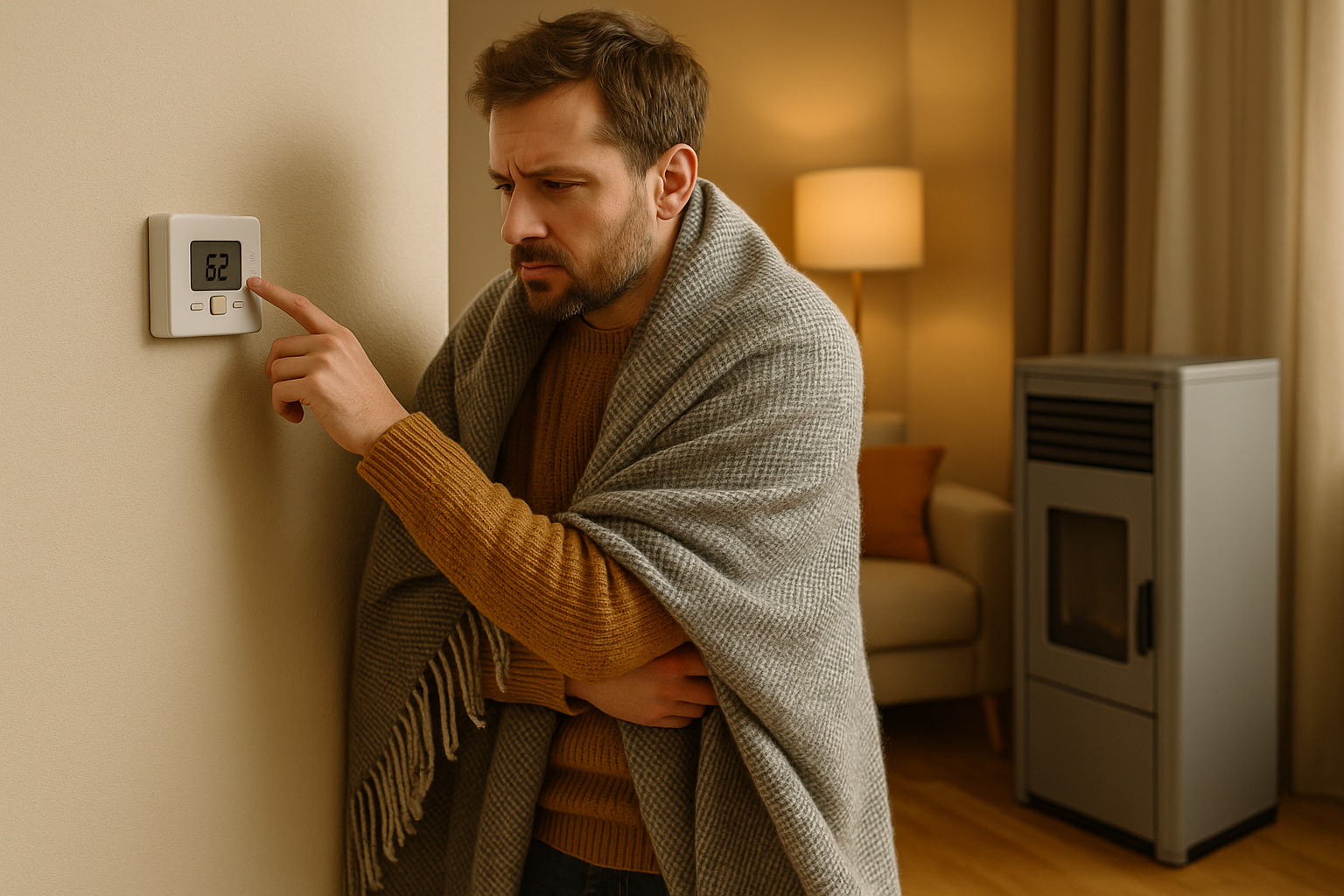Few things are as frustratLaundry day is supposed to be simple: load the washer, toss everything in the dryer, and come back to fresh, warm clothes. But what happens when you open the dryer door and find everything still damp?
For San Jose homeowners, this is a common frustration. With the cost of electricity in California averaging $0.33 per kWh (one of the highest in the nation, according to the U.S. Energy Information Administration), an inefficient dryer isn’t just inconvenient—it’s expensive.
The good news? Most dryer issues come down to a few common problems. Many can be fixed quickly without professional tools. In this blog, we’ll cover 7 possible reasons your dryer isn’t drying clothes, practical fixes, and when it’s time to call in a San Jose appliance repair expert.
1. Clogged Lint Filter
The lint filter is the #1 culprit when it comes to dryer inefficiency. If it’s blocked, airflow is reduced, and your clothes won’t dry properly.
🔹 Why it matters: Restricted airflow forces your dryer to run longer, wasting energy and straining the motor. According to the U.S. Fire Administration, 34% of dryer fires are caused by failing to clean lint filters.
👉 Fix it: Remove the filter after each cycle, clear lint, and wash it monthly with warm, soapy water to remove residue from fabric softeners.
2. Blocked Vent or Duct
Even with a clean lint screen, lint can accumulate inside the dryer vent and duct. In San Jose, where many homes have long vent runs to reach exterior walls, blockages are especially common.
🔹 Why it matters: A blocked vent traps moisture inside the drum, leaving clothes damp. Worse, it increases fire risk.
👉 Fix it: Disconnect the vent hose and check for clogs. For deep cleaning, use a dryer vent brush or call a professional for a yearly vent cleaning.
3. Overloaded Dryer
It’s tempting to stuff in towels, jeans, and bedding to save time. But overloading your dryer prevents clothes from tumbling properly, leaving wet spots.
🔹 Why it matters: An overloaded drum makes the dryer work harder, shortening its lifespan.
👉 Fix it: Stick to medium-sized loads. A simple rule: the drum should be no more than ¾ full.
4. Heating Element Problems
If your dryer runs but produces no heat, the heating element may be broken. This part is responsible for generating hot air.
🔹 Why it matters: Without heat, your dryer is basically just spinning clothes in circles.
👉 Fix it: A technician can test and replace the heating element. This is one of the more common professional repairs in older dryers.
5. Thermostat or Thermal Fuse Issues
Your dryer relies on thermostats and thermal fuses to regulate temperature. If these fail, the machine may overheat—or stop heating altogether.
🔹 Why it matters: Thermal fuses are safety devices. If they blow, the dryer won’t function until replaced.
👉 Fix it: These components require electrical testing. If you’ve ruled out lint and vent problems, call a professional.
6. Power Supply Problems
Sometimes the issue isn’t the dryer—it’s your home’s power supply.
- Electric dryers require a 240V outlet. If only 120V is available, the drum will turn, but it won’t heat.
- Gas dryers need both electricity (for the motor) and a gas connection.
👉 Fix it: Check your breaker panel for tripped switches. If you’re unsure about your power supply, consult a licensed electrician.
7. Moisture Sensor Malfunction
Modern dryers use moisture sensors to stop cycles when clothes are dry. If they’re dirty or faulty, the dryer may shut off too soon.
🔹 Why it matters: Dirty sensors trick the dryer into thinking clothes are dry when they’re not.
👉 Fix it: Clean sensor bars inside the drum with rubbing alcohol. If the issue continues, a technician may need to replace the sensors.
Preventive Maintenance Tips for San Jose Homes
To avoid dryer headaches:
- ✅ Clean lint filter after every cycle
- ✅ Schedule vent cleaning once a year
- ✅ Avoid overloading the drum
- ✅ Inspect dryer connections during seasonal home maintenance
- ✅ Keep laundry rooms well-ventilated (humidity slows drying time)
A little care goes a long way—extending the life of your dryer and lowering energy bills.
FAQ: Dryer Not Drying Clothes
1. How long should it take for a dryer to dry clothes?
Most loads should dry within 45–60 minutes. If it takes longer, something is wrong.
2. Why does my dryer get hot but not dry?
Often it’s a venting problem. Heat builds up, but moisture has nowhere to escape.
3. Can I use my dryer if the vent is clogged?
You shouldn’t. Not only will clothes stay damp, but it’s also a serious fire hazard.
4. When should I replace instead of repair?
If your dryer is over 10–12 years old and repairs cost more than half the price of a new one, replacement may be smarter.
When to Call a Professional in San Jose
If you’ve tried these fixes and your dryer still won’t dry, it’s time for expert help. A professional technician can:
- Test heating elements, thermostats, and fuses
- Perform deep vent cleaning for safety and efficiency
- Diagnose electrical or gas connection issues
At Agile Appliance Repair, we specialize in dryer repair across San Jose. Whether it’s a quick fix or a deeper issue, our certified technicians can get your laundry routine back on track—fast.
Final Thoughts
A dryer that won’t dry clothes is frustrating, but most problems have simple fixes. From cleaning your lint filter to checking the vent system, tackling these common issues can save money and extend your dryer’s life.
If you’ve tried everything and your clothes are still damp, don’t stress—help is just a call away.
👉 Contact Agile Appliance Repair in San Jose today for expert, same-day dryer repair service.



